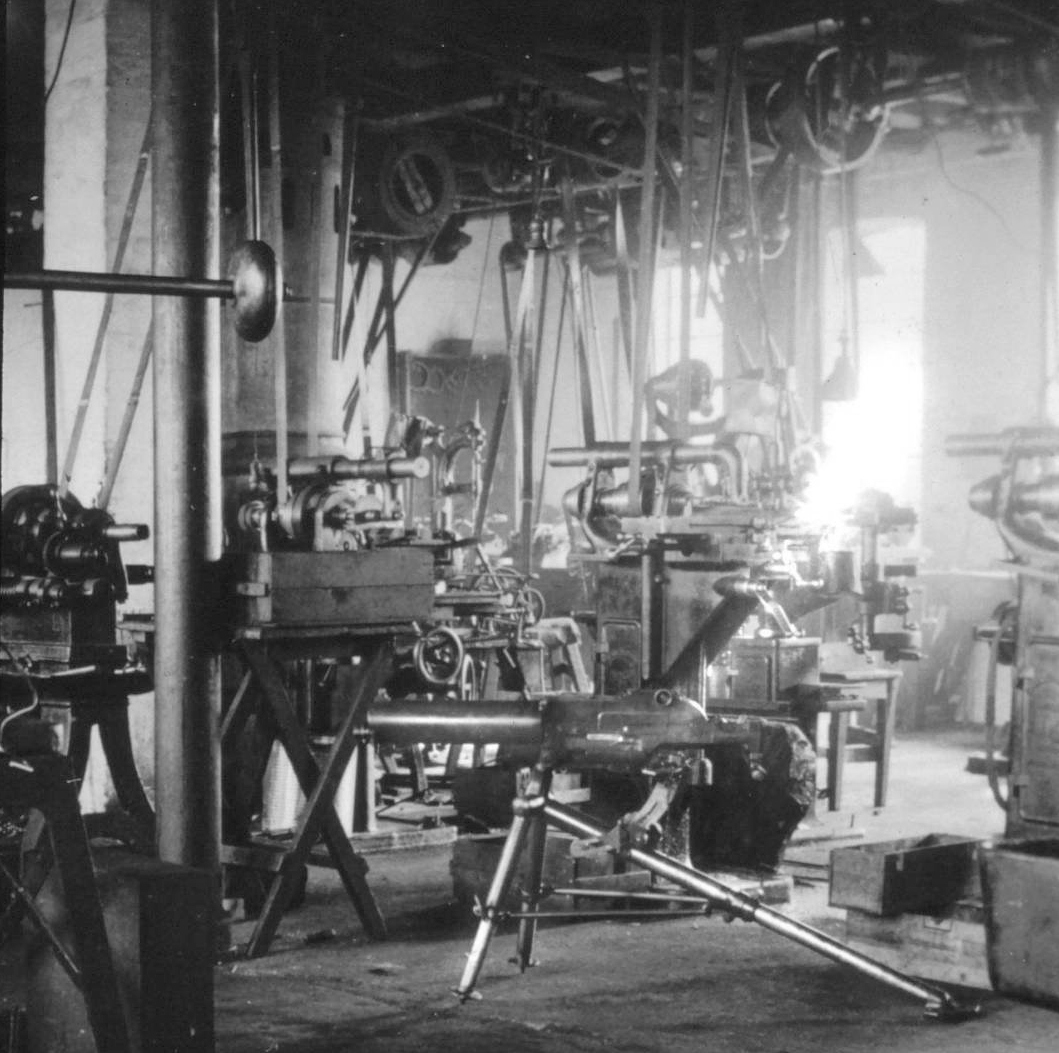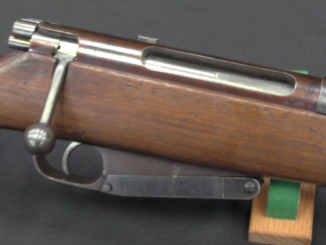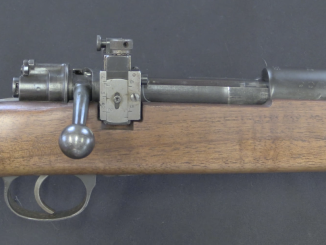
Schwarzlose machine gun in the Danish Schutz & Larsen factory, 1941. Known for sporting rifles, S&L also subcontracted for Bergmann making submachine gun and light machine gun parts. This photo suggests that they repaired other miscellaneous weapons for the German occupying forces.




Interesting information. However this publication (in Danish) http://www.nordfynsk.dk/Programmer/Otterup_gevaerfabrik/gevaerfabrikken-nordfynsk-okt2010.pdf from a book about the factory suggests that the Schwarzlose was there due to a cooperation with the Swedish Carl Gustav Stads Gevärsfaktori in Eskilstuna, who where supplying the Finns.
Then this example is probably Kulspruta m/1914 that is Swedish made version of Schwarzlose design firing 6.5×55 cartridge.
http://www.gotavapen.se/gota/artiklar/utv_ksp58/ksp14/schwarzlose.htm
Has anybody competent source describing difference between Schwarzlose machine gun of different nations?
http://www.imfdb.org/wiki/Schwarzlose_Machine_Gun_Model_07/12 has some tips, but it seems not fully cover all Schwarzlose users, given site states that:
Austria-Hungarian M.07 has gap between water jacket and cover, unlike M.07/12
Dutch versions, being based on M.07, also feature such gap
Kulspruta m/1914 is identical to M.07/12 in appearance, besides Swedish coat of arms [however, after looking and Kulspruta m/1914 photos is seem to me that they were lacking characteristic conical flash-hider]
Czechoslovak vz. 7/24 has longer barrel [however it don’t look very different to me, so it is rather hard to ID via this feature]
Fun fact: “kulspruta” translates directly to “bullet hose” or “ball hose”.
The 1941 date, if it is correct, makes the assumption that this gun was going to Finland somewhat in suspect. Finnish sources say that all the m/1914 MGs were delivered in 1940. It could also be that this gun was being repaired for the Swedish Army instead. While the m/1914 was no longer their primary medium/heavy MG, the Swedes did not have any excess of weapons chambered for their standard cartridges, and there was a war going on in Europe. In fact most of the Schwarlose MGs delivered to Finland in 1939-1940 were sold back to Sweden in 1943-1944 (the numbers never exceeded 70 in any case, so the Swedes kept most of them).
“Fun fact: “kulspruta” translates directly to “bullet hose” or “ball hose”.”
Quite similar to Russian пулемёт which literally mean “ball thrower”, name “пуля” is of Polish origin, meaning “ball”, however despite bullets evolved into non-ball shapes name remain.
It’s interesting that this factory was still being powered by line-shafts, a notoriously dangerous 19th-century technology that preceded the Age of Electricity — as well as Workmen’s Compensation laws.
“dangerous 19th-century technology that preceded the Age of Electricity”
After that mention, I though about
THE KYNOCH MACHINE GUN (SCHWARZLOSE PATENT)
https://www.forgottenweapons.com/kynoch-machine-gun/
manual don’t say exactly which cartridge it fired, only saying vaguely that
The gun can be constructed for cartridges of any calibre in use in the civilised armies of the world.
(civilised must be trendy word in 1890s)
Also notice that manual gives mass in kilograms, rather than British units.
The fact that cartridge known as .50 Colt-Kynoch was developed at similar, make me wonder: might KYNOCH tried to mate that cartridge with Schwarzlose design? Would it be possible to upscale Schwarzlose design?
aa,
you should have seen the shops of FN in the 1970s.
For those who are interested to see re-enactment firing of various machine-guns of the era including Schwarzlose you may look at this video.
https://www.youtube.com/watch?v=O0pSFzoLAjY
Perhaps there may be answers for Daweo.
My observation of factory scene:
it appears to me as fairly obsolescent since there are central transmission shafts present to drive individual machines. As I believe (but cannot support it by a solid record) during 30s and later machines were driven by individual electro-motors. In any case, picture is very interesting and of historical value.
As the many factories gradually replaced all those belts and pulleys with electric motors, the companies that made them, rather than just quietly ceasing production, discovered a new way to keep the gravy train rolling, by inventing and marketing the vibrating “fat dissolving” machine that was once a staple of spas, gyms, and “figure salons” across the country. A machine that just happened to use the exact same belts that factories once used. Totally snake-oil, of course, but gullible Americans swallowed it just as they always do, giving belt manufacturers an entirely new market for their otherwise-obsolete product.
http://atomictoasters.com/2012/04/what-ever-became-of-vibrating-belt-weight-loss-machines/
Fitness without exertion of effort – the easy way. Yup, I got it; I believe I have seen it before. In terms of gullibility, it was not just Americans who were the target. I remember seeing add in German (mind you long time back) which was promising great muscular physique using “magic cream”.
Wow! This photo is awesome! Being a dedicated Machinist myself (Manual and CNC both) and loving the historical aspect of machine tool technology and firearm development (manufacturing and development), I just think this is awesome. I have yet to see a photo that falls into both my main interests. Thanks Ian! Definitely saving this one for reference.
So is for me, as I mentioned in previous remark. Interestingly, thru years back still under so called “communist rule”, we had in related technical periodicals reprints from “American machinist” journal. Those were quite innovative and handy ideas for general use; I appreciated and liked that.
http://i.imgur.com/4PNwYd1.jpg – suggestion for the next Vintage Saturday – police special operations in early XX century